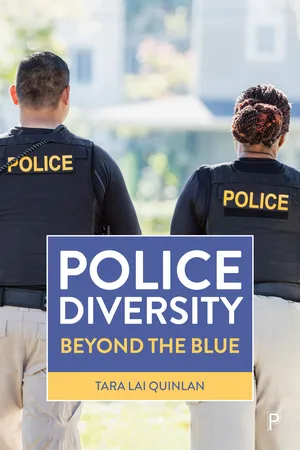
- 248 pages
- English
- ePUB (mobile friendly)
- Available on iOS & Android
About this book
Tensions between police and diverse communities in both the US and UK require innovation about ways to improve relations. While police diversity is often discussed as a potential solution, these discussions lack theoretical and empirical support.
This volume presents an original discussion of race, gender, sexual orientation and class diversity and shows that police diversity can have meaningful impacts on the decision-making, outcomes and legitimacy of police forces.
Drawing on theoretical and empirical research including interviews with diverse police leaders, this book examines how police diversity can help shift traditional policing cultures. It also considers obstacles to police reform, revealing how championing meaningful diversity can positively impact the lives of policed communities.
Frequently asked questions
- Essential is ideal for learners and professionals who enjoy exploring a wide range of subjects. Access the Essential Library with 800,000+ trusted titles and best-sellers across business, personal growth, and the humanities. Includes unlimited reading time and Standard Read Aloud voice.
- Complete: Perfect for advanced learners and researchers needing full, unrestricted access. Unlock 1.4M+ books across hundreds of subjects, including academic and specialized titles. The Complete Plan also includes advanced features like Premium Read Aloud and Research Assistant.
Please note we cannot support devices running on iOS 13 and Android 7 or earlier. Learn more about using the app.
Information
Table of contents
- Cover
- Title Page
- Copyright Page
- Table of Contents
- List of Tables
- List of Interview Subjects
- About the Author
- 1 Understanding and defining police diversity
- 2 Police culture
- 3 Police legitimacy, culture and representativeness
- 4 Racial and ethnic minorities in policing
- 5 Women in policing
- 6 LGBTQ+ officers in policing
- 7 Social class in policing
- 8 Diversity and representative bureaucracy
- 9 Conclusion
- References
- Index